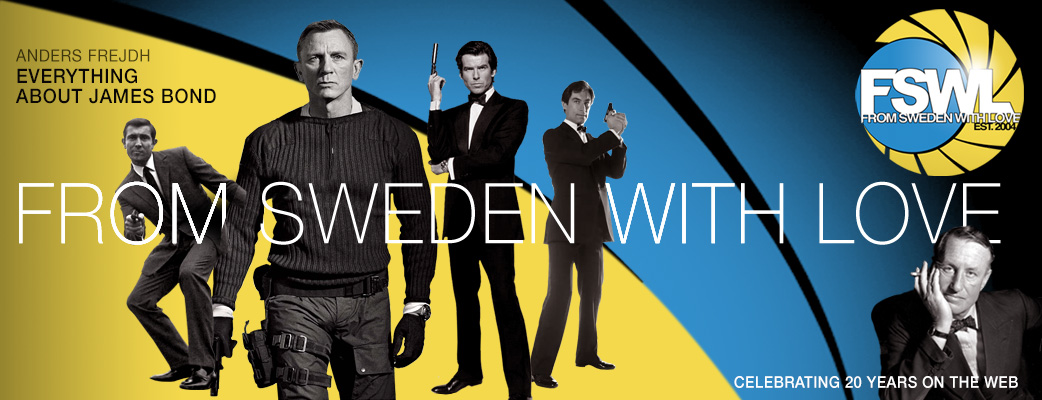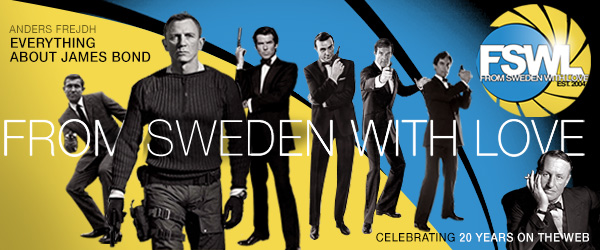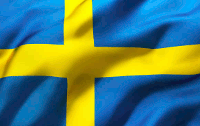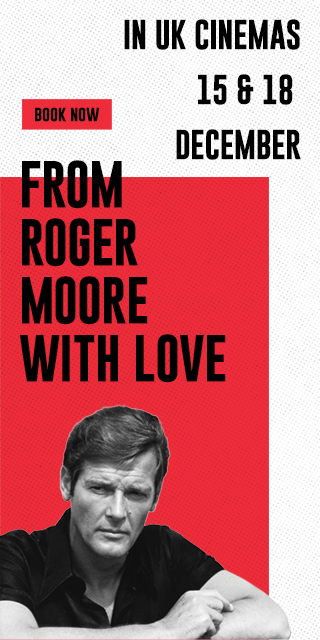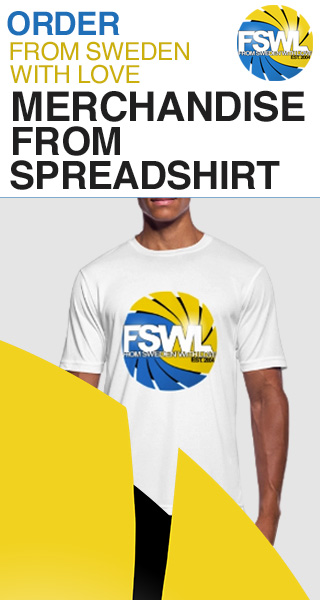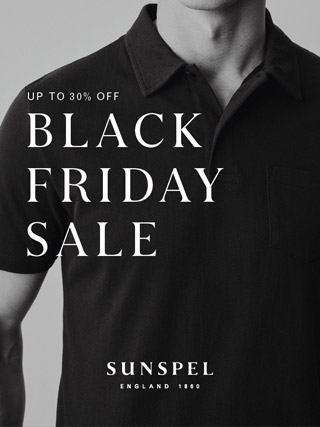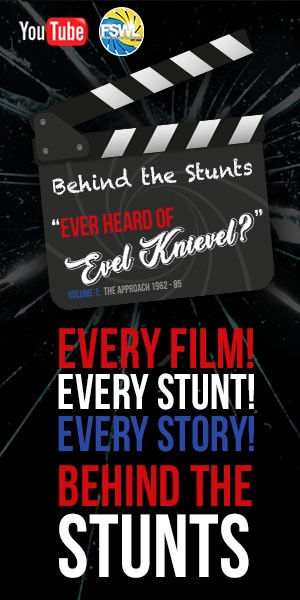Website last updated: 10-6-2025
Home
Book & Film reviews
Competitions
Event
FSWL Merchandise
In Memoriam
James Bond 007 articles
James Bond 007 collection
James Bond 007 films
James Bond 007 games
James Bond 007 literature
James Bond 007 news
James Bond 007 products
James Bond 007 shop
James Bond 007 stars
James Bond Fan Clubs
Swedes in the Bond films
A Conversation with British Optical Effects artist Alan Church
By: Mark Cerulli
Published:
2020-02-19
2020-02-19
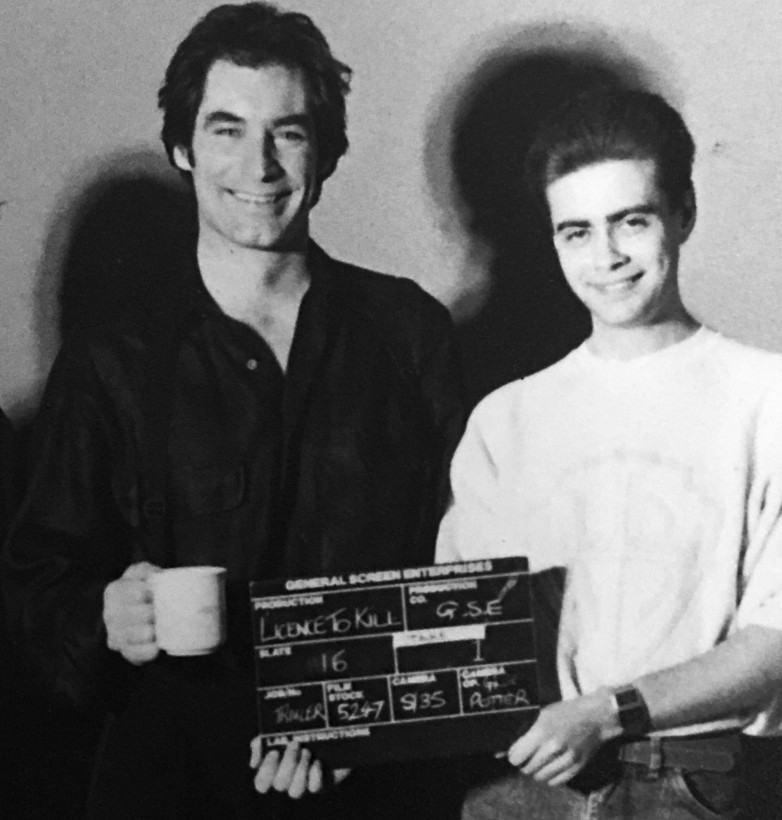
Thirty years ago, Alan Church worked hand in hand with legendary main title wizard Maurice Binder on optical effects and titles. Albeit uncredited, Church worked on four of EON ProductionsŌĆÖ James Bond films in the 1980s (returning for a fifth, 1995ŌĆÖs GoldenEye), then went on to a truly impressive career in the UK film and television industry, working on dozens of films including Aliens, Cape Fear, City of Joy, Deep Blue Sea and many others. Like most Bond fans, his 007 love affair started in the darkness of a local cinema.
ŌĆ£My first Bond films were a Dr. No/Thunderball double bill and when I saw the gun barrel and heard the John Barry music, my hair used to stand up and I didnŌĆÖt know what that was, but I knew I wanted to do it...ŌĆØ Alan remembers. Jump forward several decades and he was part of a small but dedicated team creating one of the most memorable parts of any Bond film ŌĆō the main titles!
ŌĆ£I also worked on the opticals for Never Say Never Again, but my fondest memories were of MauriceŌĆØ, Alan mentioned at the start of this exclusive interview for FSWL.
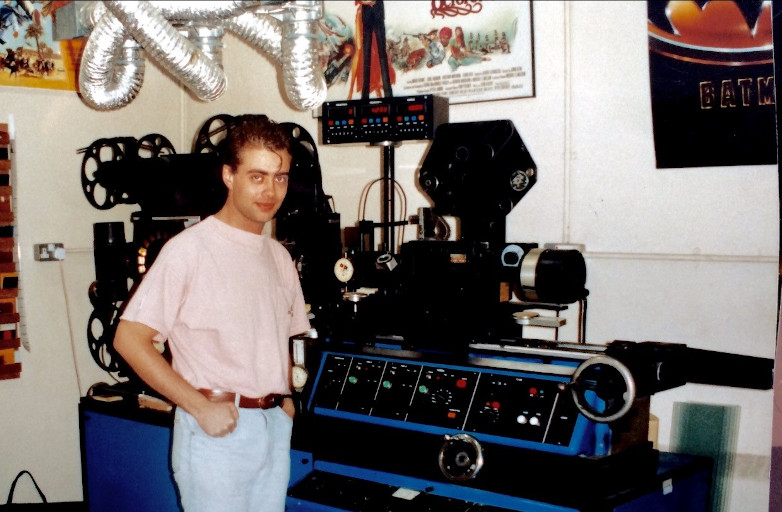
Alan Church and his Oxberry 1500. The optical camera that created the titles and gun barrel seq. Also many hundreds of other films. Copyright Alan Church. All rights reserved.
ŌĆ£It wasnŌĆÖt very glamorous,ŌĆØ the filmmaker said, describing working on the Licence to Kill titles out of a studio in freezing cold of a British spring. ŌĆ£HereŌĆÖs the thing about the titles, we didnŌĆÖt shoot them at Pinewood [Studios], we shot them in an old warehouse (which later housed the theatrical optical company GSE), we had to acquit them very quicklyŌĆ” the magic came in editorial and when you put all the opticals together and (added) the music.ŌĆØ Alan also recalled working with what he thought was the main title track sung by American musical artist, Patti LaBelle ŌĆō who, of course, provided the memorable end titles song for LTK. (Singer Gladys Knight wound up singing the main title track in the finished film), but the team worked with what they had!
ŌĆ£We started shooting the titles with no reference to the music at allŌĆ”ŌĆØ Alan explained, ŌĆ£ŌĆ” but as long as you refer to certain things that were in the film, youŌĆÖd just shoot a load of footage with ideasŌĆ” towards the end, we had the Patti LaBelle track and we had the girl jumping around behind a sheet of glass with me using a watering can, shooting 120FPS (frames per second) so you have to move the girl quite fast which didnŌĆÖt quite go with the music...ŌĆØ
One incident Alan remembers is when everything came together on the LTK titlesŌĆ” In those ŌĆ£oldŌĆØ days (the 1980s!), movies were still physically cut on editing tables ŌĆō large contraptions which wouldnŌĆÖt look out of place in Dr. NoŌĆÖs lab. ŌĆ£I would collect the rushes (processed raw footage) from Rank Labs at Denham and bring them to Uxbridge (their editing room) and weŌĆÖd do a rough assembly... with key parts from the title sequence just to create a linkage between one shot and another just to see if the effects worked...ŌĆØ
ŌĆ£Suddenly Maurice came in smiling and said, ŌĆśIŌĆÖve got it! IŌĆÖve got it! Link this up!ŌĆÖ Alan loaded the film into the table and ŌĆ£We were bloody lucky, a lot of the cues worked!ŌĆØ He also lived out the dream of many a Bond fan by appearing IN a Bond filmŌĆ” in LTKŌĆÖs opening titles no less. ŌĆ£ThatŌĆÖs my hand firing the gun... Maurice said I have small hands and we got some ladyŌĆÖs black gloves, we filled the gun barrel with oil and I fired the gun and we super imposed the girl to the left of meŌĆ” you also see my hand again when the gun fires and the girls are dancing across the screen.ŌĆØ
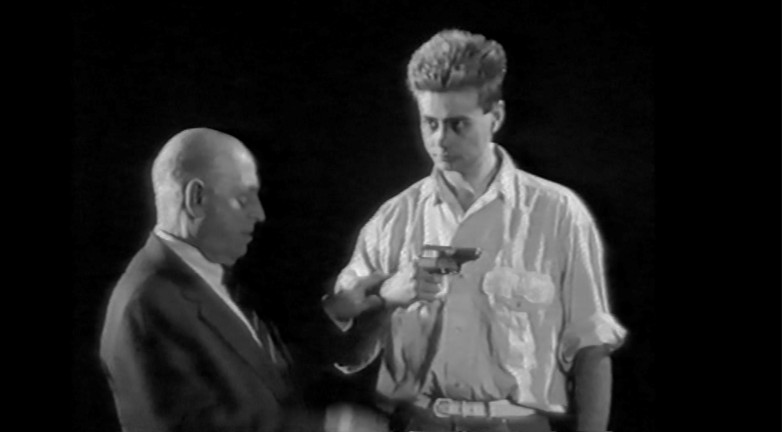
Maurice Binder directing Alan Church... ready to fire gun. Copyright Alan Church. All rights reserved.
ŌĆ£I got 25 quid (about 32 USD) for thatŌĆØ, Alan adds proudly, ŌĆ£It was deemed a bit too dangerous for the girls to do it...
Although every title sequence is different, all were put together in roughly the same way ŌĆō ŌĆ£We would do the opticals in sections,ŌĆØ Allan recalled, ŌĆ£then combine them all in one big section and Maurice would present them to John Glen or whoever in the cutting (editing) roomŌĆ” Maurice would be working with us at GSE right up to the last day.ŌĆØ
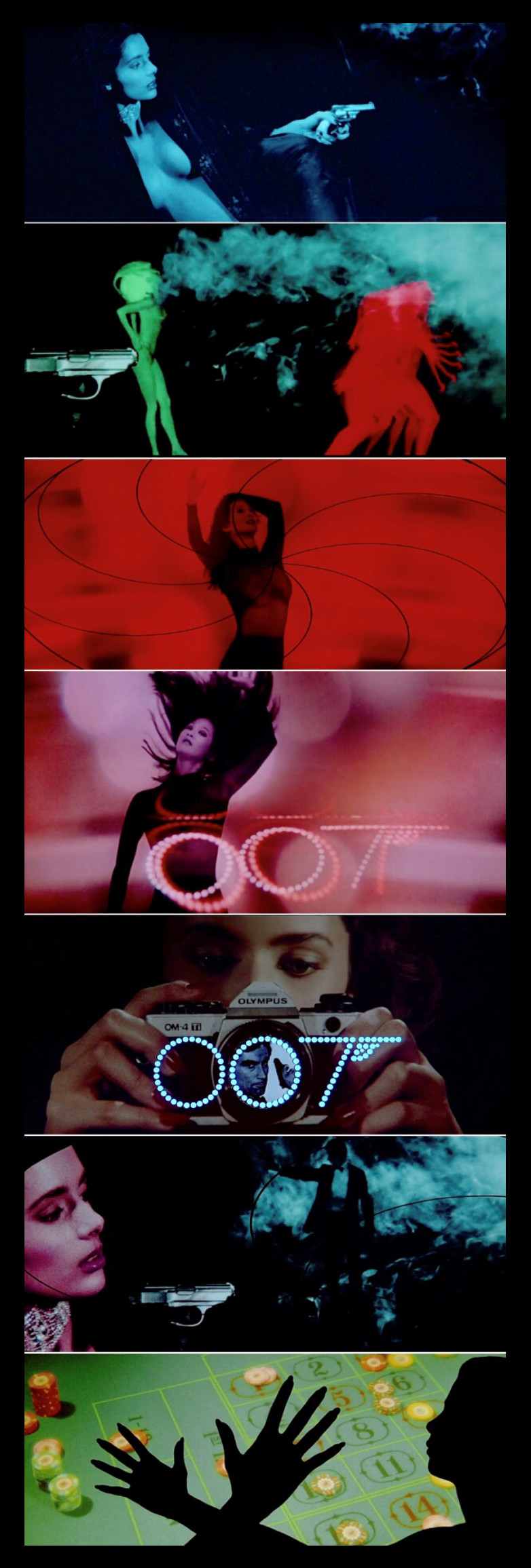
Screen grabs from the Licence To Kill title sequence. Copyright ┬® 1989 Danjaq S.A. & United Artists Pictures Limited. All rights reserved.
Alan also left his stamp on the series in another memorable way ŌĆō by redoing the iconic Gun Barrel opening for LTK. As he recalled, ŌĆ£Being such a fan, I knew the others (Gun Barrels) inside out. Maurice was way too busy, so I took on board creating the last traditional, non-CGI gun barrel.ŌĆØ And Alan jumped on the project with a true fanŌĆÖs gusto!
ŌĆ£I went as far back as I could to use first generation components... my favorite was George LazenbyŌĆÖs (the only one where Bond famously drops to a knee).ŌĆØ Immediately a challenge popped up - ŌĆ£Tim (Dalton) walked way too fast across the frame so the animated circle matte couldnŌĆÖt keep up!ŌĆØ AlanŌĆÖs ingenious solution was to optically move the actor back several thousands of an inch for a few frames. (ŌĆ£You can see a ŌĆśmoon walkŌĆÖ effect if you look carefully,ŌĆØ Alan recommends.) He kept Bond moving until the blood covered the gun barrel, then he froze him. After that, he and Binder worked together to create the final version: ŌĆ£Once in the can Maurice was ready in the cutting room for me to initiate, create and combine the title background elements on the optical camera and about the same time we also received a 35mm mag track of the final Gladys Knight version of the song.ŌĆØ
However he did it, the gun barrel opening was highly effective. Alan also mentioned creating a very modern steel blue version for The Living Daylights, which apparently stayed in the edit room although he called it ŌĆ£stunningŌĆØ.
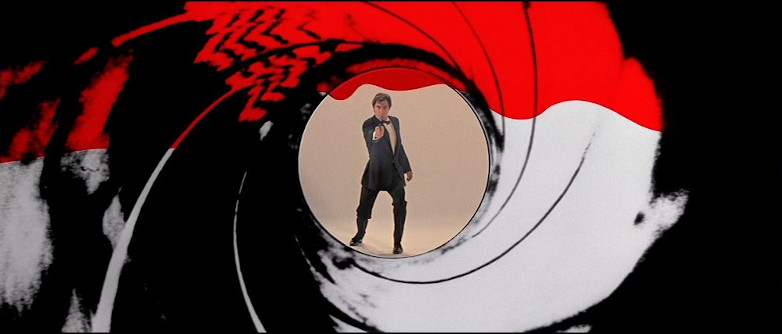
Timothy Dalton's gun barrel sequence for Licence To Kill. Copyright ┬® 1987 Danjaq S.A. & MGM/United Artists Pictures. All rights reserved.
Technology has radically changed the way movies are edited ŌĆō now everything is down to keystrokes on a computer, but Alan fondly remembers working with 35MM and the labor-intensive art of ŌĆ£cuttingŌĆØ ŌĆ” ŌĆ£Oh I loved it,ŌĆØ he enthuses. ŌĆ£I did a load of Cannon trailers (for movies like Runaway Train, Delta Force, etc.) and I purely worked on film. I used a Moviola and a Steenbeck (editing table) ŌĆ” to me it was very organic, I loved holding film and making splices ŌĆō even removing one frame and splicing in anotherŌĆ”ŌĆØ
Maurice Binder, AlanŌĆÖs friend and mentor, sadly passed away after License to Kill.
ŌĆ£His [Maurice Binder] death in 1991 was very sadŌĆ”ŌĆØ Alan recalled. ŌĆ£I went to his memorial and Cubby [Albert R. Broccoli] was there. I was quite a shy person in those days and Cubby wasnŌĆÖt well, but he came over to me and said, ŌĆśHi, how are you?ŌĆÖ Somehow, I said, ŌĆśBut you donŌĆÖt know me, do you?ŌĆÖ And Cubby said, ŌĆśYes I do, youŌĆÖre Alan.ŌĆÖŌĆØ
That little gesture to a grieving colleague meant the world ŌĆō and proved, once again, that no matter how big the Bond franchise became, itŌĆÖs a family business. And the Boss knows your name.
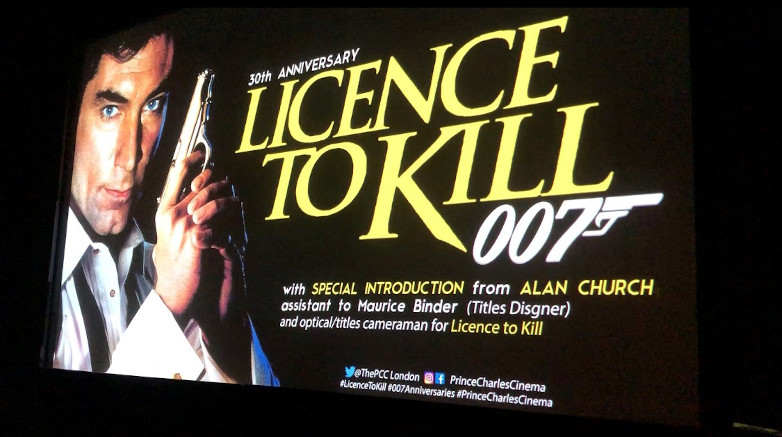
On-screen at The Prince Charles cinema a 30th anniversary screening of Licence To Kill in 2019. Copyright Alan Church. All rights reserved.
Alan remains very active in the business and are now a much sought-after visual effects supervisor around the world. Among his credits in recent years are The Devils Double (2011) directed by Lee Tamahori, Third Person directed by Paul Haggis and Good Omens (2019) directed by Douglas Mackinnon. In 2001, Church won a BAFTA for Gormenghast directed by Andy Wilson.
Learn more about Alan Church' amazing career on his IMDB page.
Tags:
#interviews
#licence_to_kill
#mark_cerulli
#timothy_dalton
Tweet
